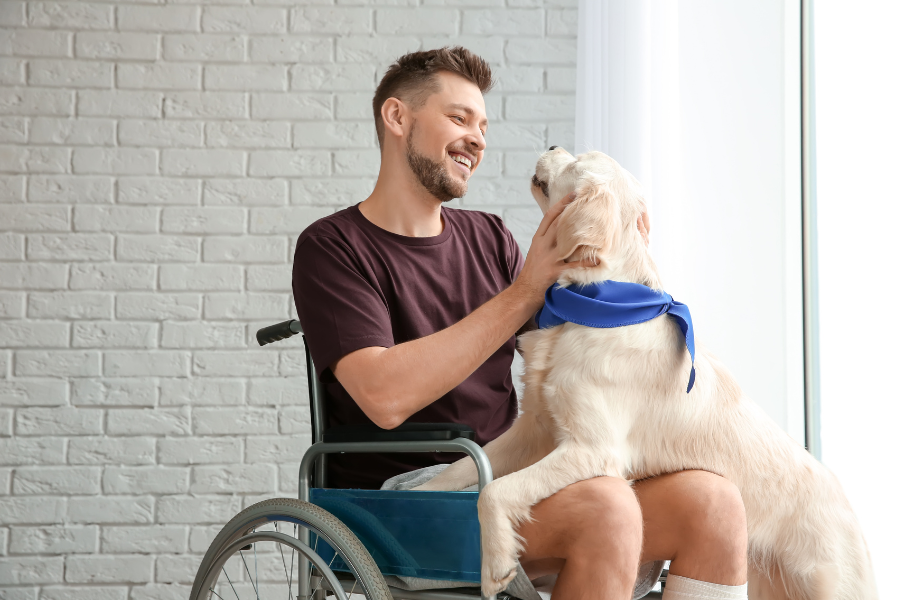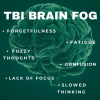The thoracic portion of the spinal cord is located in the upper and middle back beginning at the base of your neck at the end of the cervical spine and ending at the bottom of your rib cage right above the lumbar spine. The thoracic spinal cord consists of 12 thoracic vertebrae and 12 pairs of spinal nerve roots labeled as T-1 through T-12.
The thoracic spine has many significant functions including supporting your chest and abdomen, protecting the spinal cord and the spinal nerves, providing an attachment for your ribs, and allowing your body to move. Additionally, the cervical spine and lumbar spine form a “c-shaped” curve called lordosis, and the thoracic vertebrae produce a “reverse c shaped” curve known as a kyphotic curve. These curves are vital for balance, and help with standing upright.
The nerves that branch off from your spinal cord in your thoracic spine transmit signals between your brain and major organs, including the heart, lungs, liver and small intestine. Together, the thoracic spine and rib cage form as a shield to protect the lungs and heart.
Roughly 40 percent of all spinal cord injuries result in paraplegia, which is paralysis of the legs and lower body. Half of these spinal cord injuries are complete injuries, and the other half are incomplete injuries.
Of all spinal cord injuries, 35 percent happen at the thoracic level.
A complete spinal cord injury means the spinal cord is fully severed, which results in permanent damage to the area of the spinal cord that is affected.
Paraplegia or tetraplegia are results of complete spinal cord injuries.
An incomplete spinal cord injury refers to partial damage to the spinal cord. The spinal cord is compressed or injured, but the brain’s ability to send signals below the site of the injury is not completely removed. The ability to move and the amount of feeling depends on the area of the spine injured and the severity of the injury.
An injury to the T1 is the highest level in the spinal cord where a patient will still be able to use their hands.
- T1 and T2: These nerves go into the top of your chest and into your arms and hands. The T1 nerve is also part of the brachial plexus, a network of nerves in your shoulders that carries movement and sensory signals from your spinal cord to your arms and hands. T1 nerve roots affect sensation in your inner forearm and the ability to spread your fingers apart. T2 nerve roots affect sensation around the armpits and upper chest, as well as the upper chest muscles.
- T3 – T5: These nerves go into your chest wall. Together, these nerves help control your rib cage, lungs and diaphragm, and the muscles that help you breathe.
- T6 – T12: These nerves affect your abdominal and back muscles. These nerves, along with certain muscles, help with balance and posture, and they help you cough. Additionally, individuals with T6 or higher-level injuries are more likely to experience a condition called autonomic dysreflexia. Autonomic dysreflexia is a syndrome in which there is a sudden onset of excessively high blood pressure. Without proper management, autonomic dysreflexia can be life-threatening. Therefore, it is essential for at-risk individuals to be aware of potential triggers and avoid them.
While thoracic spinal cord injuries are serious and require immediate medical attention, those who suffer from a thoracic spinal cord injury will continue to live independent lives.
Patients with thoracic spinal cord injuries will likely be paraplegic with the use of their arms, chest and upper back. They may breathe normally with limited endurance, use a manual wheelchair, be able to transfer themselves in and out of their wheelchair without assistance, drive a modified car with hand controls, stand with a frame or leg brace and feed oneself.
The prognosis and recovery from a thoracic spinal cord injury may differ from each patient depending on the type of injury to the thoracic spinal cord, and the level of severity.
An injury to the thoracic nerves at the T1-T5 levels looks like:
- Arm and hand function is usually normal
- Injuries usually affect the trunk and legs (also known as paraplegia)
- Most likely use a manual wheelchair
- Can learn to drive a modified car
- Can stand in a standing frame, while others may walk with braces
An injury to the thoracic nerves at the T6-T12 levels looks like:
- Usually results in paraplegia
- Normal upper-body movement
- Fair to good ability to control and balance trunk while in the seated position
- Should be able to cough productively (if abdominal muscles are intact)
- Little or no voluntary bowel control or bladder control but can manage on their own with special equipment
- Most likely use a manual wheelchair
- Can learn to drive a modified car
- Some can stand in a standing frame, while others may walk with braces.
Recovery from a spinal cord injury is a complex and challenging process that takes years; but with the right tools, recovery is possible. This is where Neuropraxis comes in.
Neuropraxis is a home and community brain and spinal cord injury rehabilitation program that provides the resources necessary for patients who want to continue living rich and independent lives.
This is why Neuropraxis works closely with each client to develop an individualized treatment plan to offer them the best possible outcome and recovery from a traumatic spinal cord injury.
Occupational therapy and physical therapy along with psychological support are just a few ways Neuropraxis helps clients regain as much independence as possible.
In addition to its rehabilitation services, Neuropraxis also offers client education and support groups. These groups provide information and resources to help spinal cord injured clients and their families cope with the challenges of a spinal cord injury.
For more information, contact Neuropraxis at (888) 266-8921 or hello@neuropraxisrehab.com, or visit www.neuropraxisrehab.com.
Resources:
my.clevelandclinic.org
www.nscisc.uab.edu
www.spinalcord.com
www.shepherd.org
www.spinalinjury101.org
www.flintrehab.com



